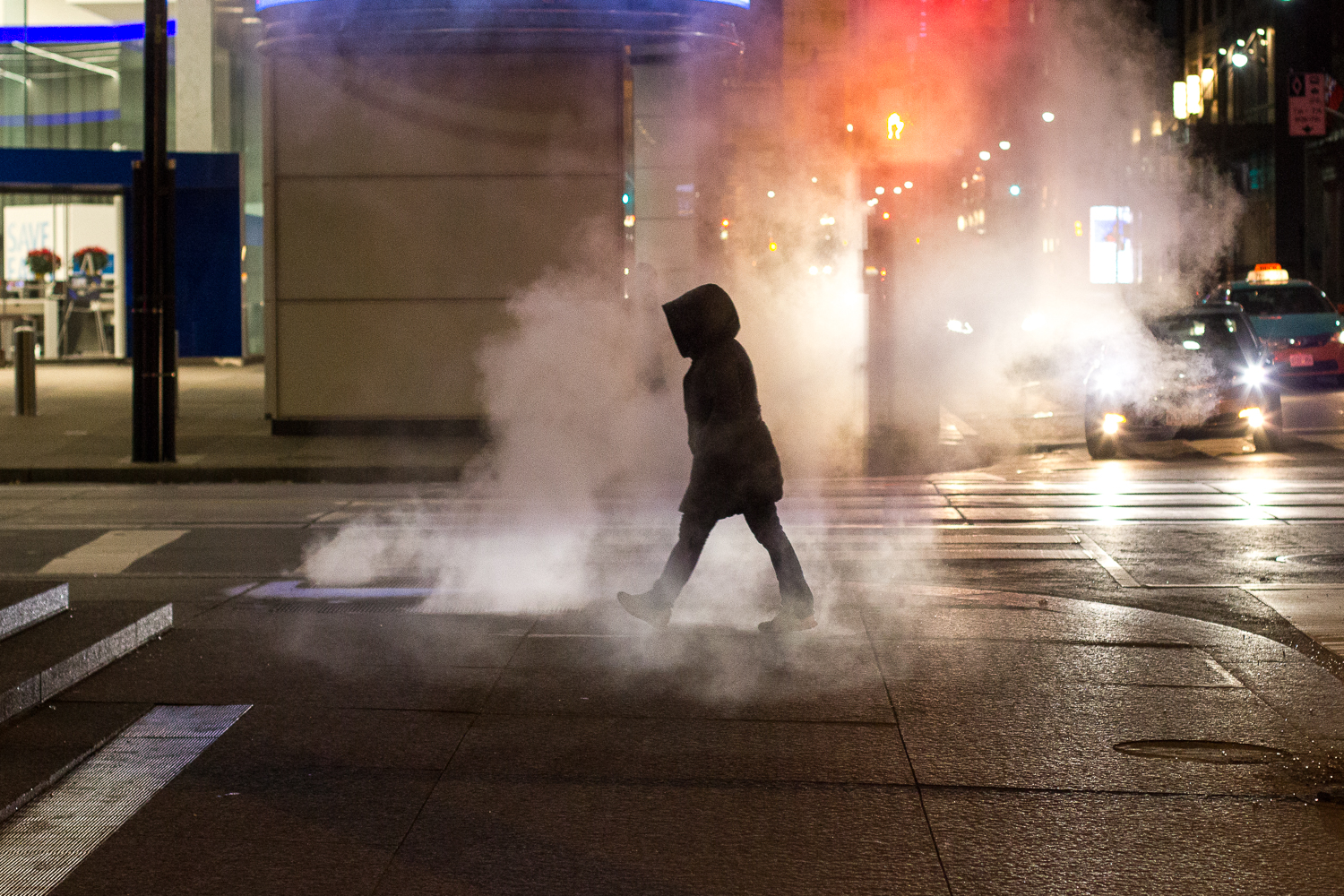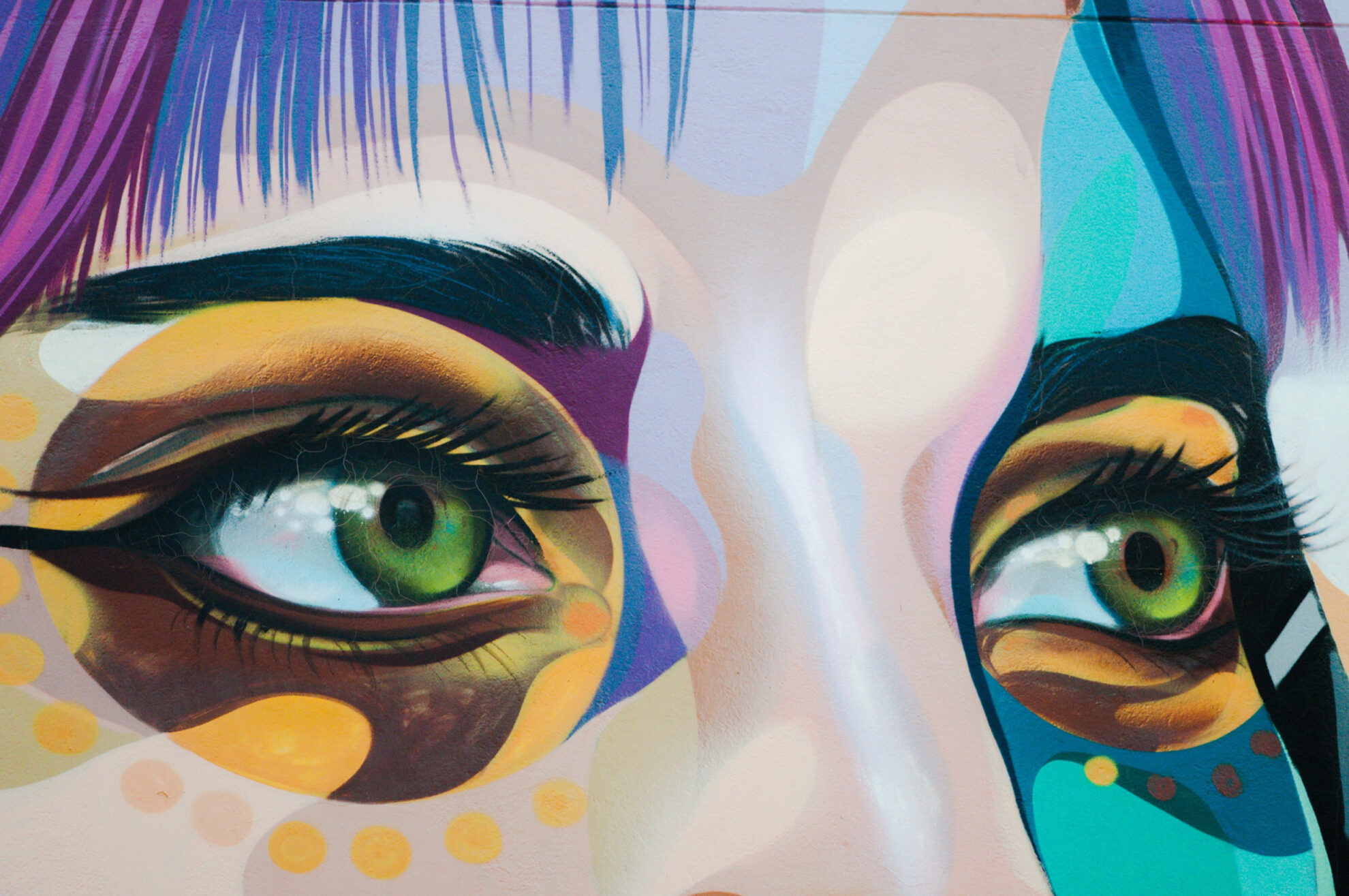I started shooting the streets before I even knew what street photography was. I don’t remember the exact year, but it was the heyday of 110-format film during the 80s.
For me, it was a natural extension of my love of people watching. It was simply fun to capture people’s expressions, behaviors, and other idiosyncrasies. Back then, there was no pressure surrounding “getting the shot” because I didn’t know “getting the shot” was even a thing.
I was very non-specific in my shooting at the start. I wasn’t looking for what’s known as “the decisive moment,” a term made popular by famous French humanist photographer, Henri Cartier-Bresson. I just sort of pointed my camera in the direction of a scene and snapped. And then waited for the film lab to return the results.
I took a lot of wide shots with many people in them, like your Dad’s tourist snapshots. But looking at the prints afterwards, I often found that I would be much more interested in the expressions on people’s faces than the location – even if it happened to be Disney World.
Today, street photography for me is akin to a form of meditation. It has always been about losing myself in the sights and sounds of a city, and getting into the “zone” – that magical place where distractions melt away and your eye finds the right moments at the right time without conscious thought.
A Brief Snapshot of Street Photography
While many of my better shots have been (and continue to be) by accident, street photography is truly an art. A fine art, to be more exact. It takes a mixture of many skills and traits – composition, exposure, timing, not to mention courage in some cases as well as patience – to produce results that are worth showing.
Some street shooters consistently produce impressive images. For me personally, to produce good results, the stars have to align. It’s often about a lucky moment, a subject glancing at the camera, or a beam of light cutting across in just the right place. I often come home from hours of shooting without an image that I can be proud of, but over the years I’ve learned to accept that not every mining expedition is going to dig up a gem. I’ve learned that on any given day, there can be something interesting and photo-worthy happening on the streets – and some days, I will be more tuned in to them and less hesitant to press the shutter than on others.

Like any artistic endeavor, my photography has evolved over the years. I went from very “literal” street photography – often singling out people – to more artistically minded views that consider context or tell a story. I also did a series that I exhibited locally called Anonymous People in Familiar Places, which obscured the faces of the subjects in an effort to influence viewers into noticing other elements.
Recently, I’ve been looking more than usual at other photographers’ work. Not just the greats – although there’s a lot to be said for them – but work from those who are still producing street photographs regularly. The #streetphotography hashtag on Instagram is pushing 87 million matches (which will probably be a lot higher by the time I finish writing this piece), but when people use that hashtag, they are often posting portraits of their friends posing in an urban environment – which is not street photography. Real street – and I think most street shooters would agree – is capturing strangers in real-life moments, and a real “street portrait” is of someone you just met and may never meet again.
Is There Money in Street Shooting?
For me, street photography has never been an endeavor that can be solely measured by commercial success or “likes”. The reward, at least for me, is to come back home with something special.
However, some photographers are making money from street photography, and rightly so. Getting shots worth selling involves an investment of time, skills, and the right gear. I’ve sold a print here and there, and I’ve also landed some photography gigs from people who like my candid shooting approach. But other photogs are finding success not only from print requests, but also from art books as well as editorial licensing.
Alex Zafer, a Hamilton, Ontario resident and active street photographer, has been one of my photography inspirations since I moved to this city in 2013. He recently released a collection of his photography in a number of books. However, like me, the satisfaction he gets from making images on the streets far outweighs his desire to make money from it.
“Other kinds of work I do in photography and digital media, sure, it is partly how I earn my living,” he says. “However, I have never approached my street photo making as a business venture. Because it most certainly is not. Though yes, I have sold and continue to sell street images, among other kinds of photography I make, yet this has never been my goal or end-game.”
He adds that if you’re approaching the craft from a monetization standpoint, you might want to reevaluate why you’re doing it. “You must produce work that is highly meaningful to you. Not the kind of work you think will get you hired, or that will sell, but something much deeper,” he notes.
He believes that printing one’s photographic work is important, even if you don’t plan to sell it to others. “Like publishing a book, it lends to a sense of permanence, a mark to say I was here and this is what I saw,” he offers.
He also talks about achieving what he calls the “zen spot” when he’s out shooting. “If I find I’m analyzing too much or intellectualizing what I am doing, what I am capturing, and how, I will usually miss the shots,” he notes. “If I am too self-conscious then it means I am not in the ‘spell’ or the zone.”
Artists can find something useful in the teachings of Zen Buddhism, says Zafer. “Like meditation, Zen functions as a way of uncovering the truth,” he notes.

More Women Are Taking up the Craft
It may seem that street photography is male-dominated, as a lot of the names you hear associated with street and documentary photography from years past are male (including Cartier-Bresson, Garry Winogrand, Fred Herzog, and Bill Cunningham, to name a few).
That is probably still true. But make no mistake: women have not only embraced the genre, but they have been crushing it for decades. And more are now taking up the craft.
Notably in 2018, an exhibit of Vivian Maier’s work arrived at the Art Gallery of Hamilton, the only Canadian stop on the tour. If you haven’t heard of her, then stop what you’re doing and check out Vivian Maier’s body of work. Her photos connect viewers with the subjects in a way that’s both powerful and personal, but her own story is interesting too – her work was hidden from public view for decades, and only discovered when it was forcibly sold via auction because Vivian was unable to keep up payments on her storage space on Chicago’s North Side. Vivian died less than a year after the photos were published in 2008.
Of course, there are other big names in women street photography including Diane Arbus and Dorothea Lange, who took a documentary approach to capturing everyday life. There are many others still rightfully getting recognition such as Suzanne Stein (who I discovered through social media), whose intimate work never fails to wow me.
Closer to home, I follow Monique Campbell’s work, which has been part of several exhibitions including one at the prestigious Louvre in Paris. Recently, I also discovered the photographic work of Louise Erskine, an agriculture, gender, and rural community advocate from rural Alberta, Canada, currently residing in upstate New York. I asked her about what drives her work, and whether street photography is empowering.
“I shoot for two reasons: one, a way to connect with my community and surroundings, and two, as a medium to challenge my understanding of our world. I share my photos with others as a means to encourage all to also challenge the way they interact with others,” offers Erskine. “A camera is a literal lens through which we may all see a woman’s experience. Listen to what she is telling you. The angles she uses, the subjects she portrays, and the community she interacts with. A woman’s street photography is more complicated than ‘how may I interact with this subject because of my gender?’ It’s about her visions of the world.”
If you want to discover some of the other female photographers currently making a splash, check out Women Street Photographers on Instagram.

Street Photography Tells Stories of Past and Present
I haven’t shot nearly as much on the streets lately as I did during my most active years between 2003 and 2018. That could come down to many factors, including having less time, and getting a little tired of walking around the same city (hint: exploring a new city is a great way to give your street shooting a jumpstart).
While I hope for a personal “Renaissance,” I have continued to be a student of the craft, and have also continued snapping everyday scenes, even as the pandemic makes me less inclined to get close to other humans. In fact, I have experimented with ways to keep shooting during a lockdown, including pointing my camera through the passenger window of a moving vehicle (which is in itself an exercise in anticipation and timing).
Although I’ve slowed down, I think I will always shoot street in some form or another. It’s part of me. I still often carry my camera with me places, even if I don’t take a single shot. One thing’s for sure, street photography will always be an important way to capture the beauty of mundane moments. Perhaps more importantly, it’s a way to show our children how people looked, dressed, and interacted when they weren’t putting on a facade for the camera.





